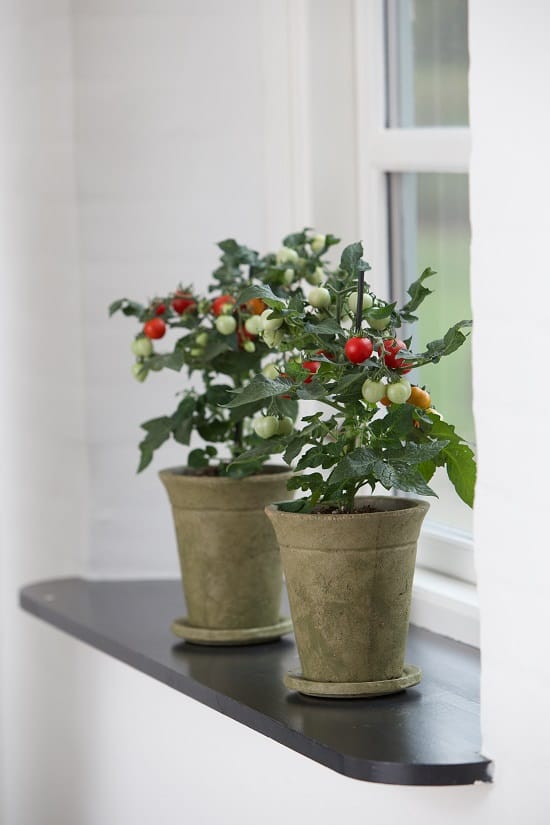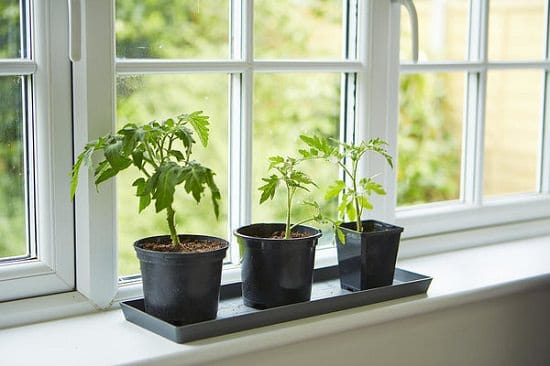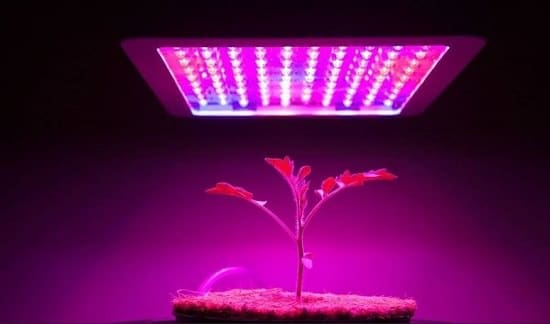Growing Tomatoes Indoors is easy if you plant the right variety, have a sunny window, and know all the requirements.
Growing tomatoes indoors is the way to get fresh, homegrown tomatoes even if you lack outdoor space or the weather is very cold. There is a catch though–The tomatoes won’t grow that prolifically and will remain smaller in size than the regular ones grown outdoors. Although, you’ll be able to get the irresistible taste of homegrown tomatoes.
Choosing a Variety
The primary distinction between the varieties is determinate and indeterminate varieties. Determinate varieties are bushy and compact which grow without any support, and indeterminate varieties are vining, usually large. While you can grow almost any tomato cultivar in a pot, you should choose determinate ones when growing tomatoes indoors. Here’s a list of best tomato varieties for containers, check that out. Also, read the pointers below to decide:
- For a prolific and quick harvest, go for cherry tomatoes.
- Indeterminate tomatoes require more space to grow compared to determinate. Dwarf determinate tomatoes are best for compact spaces.
- Siberia, Tommy Toe, Yellow Pear, Pink Ping Pong, and Silvery Fir Tree are some of the heirloom indeterminate tomatoes. You can also plant some indeterminate hybrids such as Orange Pixie Tomato, Micro Tom, Totem, Tiny Tim, Patio, and Red Robin.
- Micro Tom is the smallest tomato cultivar that doesn’t exceed the height of 6 inches. You can even grow it on a windowsill.
- Gold Nugget and Washington Cherry are some of the Determinate cherry tomatoes. The two most popular determinate hybrids are Terenzo Hybrid and Cherries Jubilee.
Growing Tomatoes from Seeds
Once you have selected the tomato varieties, buy the seed packets from a garden center or online. For planting seeds, sprinkle some fresh water over potting soil or seed starter mix so that it becomes moist. Take a seed starting tray and fill all the cells with the seed mix. Plant 2 to 3 seeds per cell, 1/4 inch deep. If seed starting trays are not available, you can use cans, egg cartons, yogurt containers or make these newspaper seedling pots.
Also Read: DIY Egg Carton Uses
Aiding Germination
The germination of the seeds takes around 5-10 days. To prevent the soil from drying out and to improve the success rate, you can cover the seedlings with a plastic wrap or lid. Place the seedling tray or container at a warm spot where the temperature range is between 70 to 80 F (21 to 27 C). Water the seeds regularly by lifting up the lid and place it again after watering.
Transplanting
Keep watching your seedlings, and when two sets of true leaves appear, they are ready for transplanting. Any five-gallon sized container that is 10 inches deep will be enough to hold the mature plant.
However, the container size totally depends on the tomato cultivar. For example, if you’re growing a dwarf variety like Mirco Tom, you’ll need a small 6 inches pot. Gently uproot the seedling from their respective cells and loosen up the soil sticking to the roots. Plant the seedling in the pot and water generously.
Requirements For Growing Tomatoes Indoors
Location
Keep the tomato plants at a spot where they can receive 6-8 hours of sunlight. The south-facing window in the house gets ample sunlight so you can locate the plant there. You can also install artificial light source such as fluorescent light or grow-light in the absence of adequate sunlight.
NOTE: Frequently rotate the plants kept on the windowsill so that all the sides receive sun.
Watering
You never let the soil turn completely dry when growing tomatoes outdoors. But indoors, be careful with watering. Don’t overwater, or the soil will become soggy and attract root rot. Check whether the soil is moist by sticking your finger in the soil before watering. Water regularly to keep the soil slightly moist.
Indoor Tomato Plant Care

Fertilizing
Once you have transplanted tomatoes, fertilize within two weeks. As indeterminate varieties grow and produce tomatoes continuously, they are more in need of fertilization. Feeding twice a month is enough for providing optimum nutrients to your plant. Fertilize with balanced liquid fertilizer after every other week before the plant starts to flower. Once you see the flowers, start using the high potassium fertilizer like 9-15-30. Check out eight things you should put in the tomato planting hole.
Managing Artificial Light
What most gardeners forget when they use artificial light is turning it off. Even when growing under natural light, the plants need a period of darkness that is the night to rest. Same is the case when you are growing tomatoes under grow lights. The best way to do that is to stick to nature’s cycle and to turn on the light in the morning and again to turn it off in the night after about 12-16 hours. If it seems too much of a task, there is always the option of setting a timer.
Also Read: DIY LED Grow Light Panels
Pollination
In the outdoor setting, pollination is taken care of by nature itself by wind, bees, birds, or other insects as pollinators. Indoors you’ll have to take some measures to facilitate pollination. Keep the table fan at low speed directed towards the tomato plant to replicate the effect of natural wind. Manually distributing pollens on the flowers using paintbrush, cotton swab, or even hand will also work. You can also gently shake or tap the base of the stem to distribute pollen.
Pests and Diseases
You won’t need to worry much about pests but still keep an eye on aphids and mites. In diseases, root rot can be a problem due to excess moisture.
Harvesting
Tomatoes which turn to a vibrant shade of red, yellow, or pink depending on the variety indicate that they are ready for harvest. You can also check for harvest-ready tomatoes by gently squeezing them. If they are mature, they’ll be slightly soft. You can use a cutting tool or simply twist the end of the stem attached to tomato to pluck it.
Also Read: How to Grow Tomatoes in Limited Space







